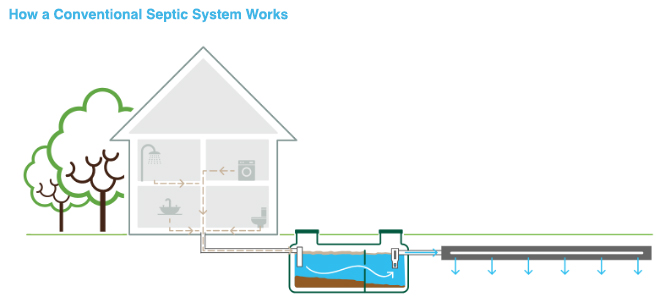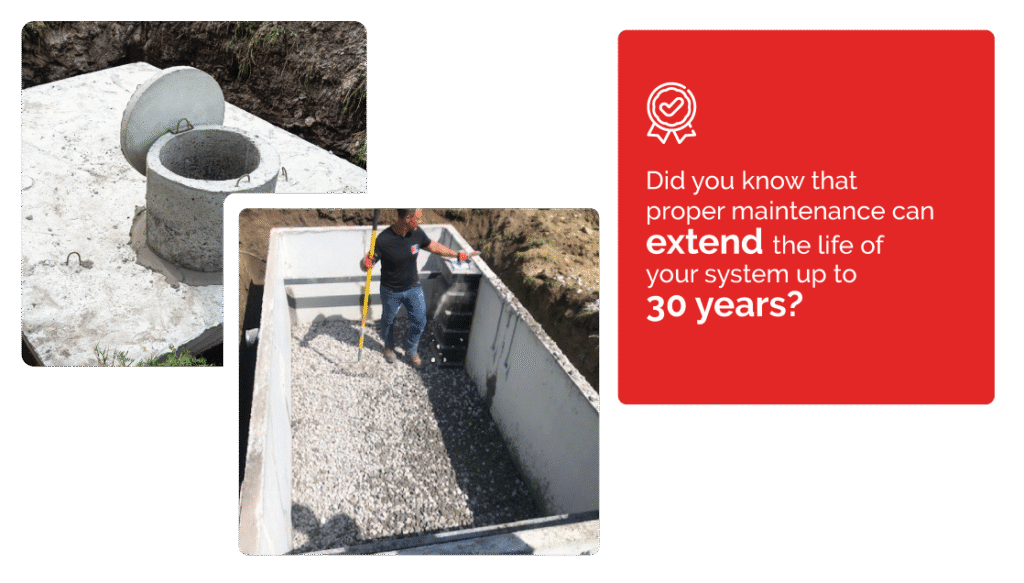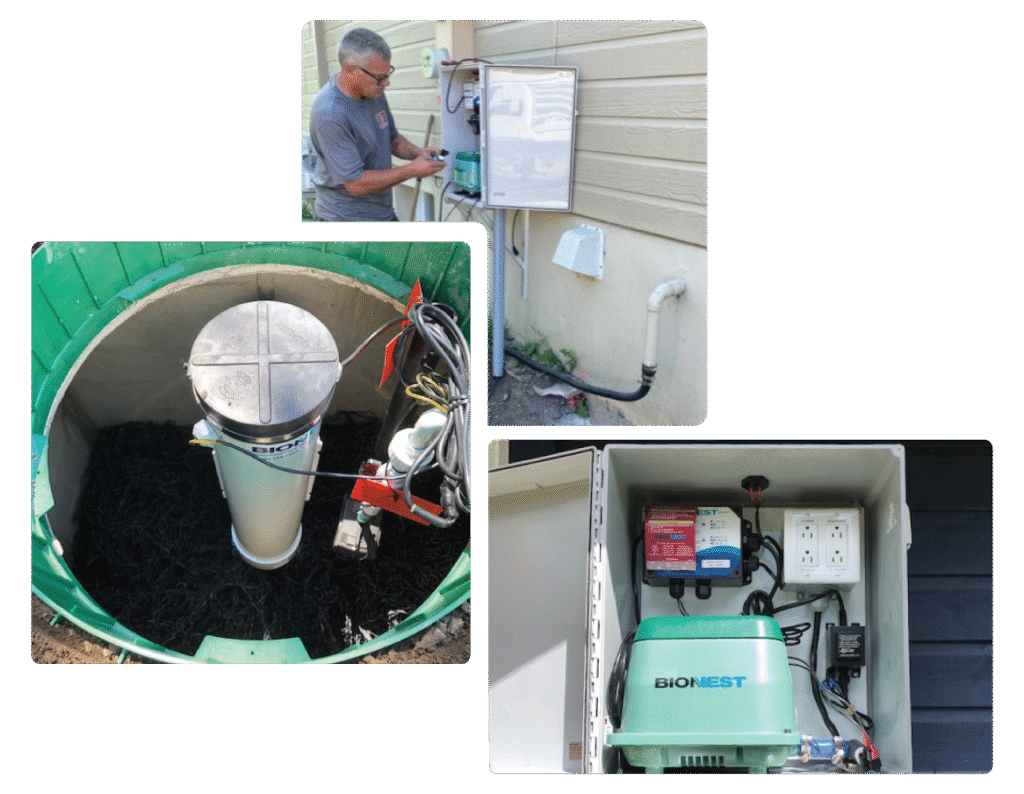How Does a Septic System Work?
How does
A Septic System Work?
- A septic tank, where solids settle.
- A leaching field (absorption field), which completes the treatment before the water returns to the soil.
Average
Lifespan:
- 15 to 25 years.
- It can be extended through:
- Regular pumping
- Responsible water use
- Avoiding harmful chemical products

System Operation Illustration.
Source: Premier Tech — used with permission

How
Does a Conventional Septic System Work?
10 steps
Of Wastewater Treatment
Wastewater Collection
Blackwater (toilets) and greywater (showers, washers, sinks, etc.) flow into the septic tank.
1
Settling of Solids
Sludge settle at the bottom of the tank.
Scum Formation
Oils and fats float to the surface.
3
Pollutant Decomposition
Anaerobic bacteria decompose organic matter.
Pre-Filtration
The effluent filter captures suspended particles.
Transfer to the Leaching Field
Clarified water is directed to the leaching field.
Distribution Through Perforated Pipes
Water slowly infiltrates into the soil.
Treatment by Aerobic Bacteria
Water is purified by aerobic bacteria in the gravel.
Natural Soil Filtration
The soil removes remaining impurities.
Return to the Environment
The purified water safely rejoins groundwater and natural waterways.

When is
A Technological Treatment System Required?
In some situations, a conventional septic system is not sufficient.
This can occur when:
- The soil is clay-based or poorly drained
- The land is limited or sloped
- The residence is near a lake, river, or environmentally sensitive area
- Available space is limited, or local regulations are stricter
Comparing systems
Purchase Cost vs. Maintenance Cost
Purchasing a septic system is a major investment, especially when it involves a secondary or tertiary system. It’s important to compare:
- Initial purchase cost
- Annual maintenance cost
- System durability
- Environmental benefits
Comparative table
Of Septic Systems
Here is an overview of the main types of septic systems, along with a more detailed description and their respective advantages.
| System Name | Description | Advantages |
|---|---|---|
| Conventional system | The traditional system includes a septic tank and a leaching field. It’s simple, reliable, and cost-effective but requires well-drained soil. | Low maintenance and cost-effective.. |
| Holding tank | A sealed tank with no outlet that holds wastewater on non-compliant lots. Must be pumped regularly. | No soil infiltration, ideal for sensitive areas. |
| Bionest (lien) | Aerated system using a fixed media. | Excellent treatment quality, compact. |
| Écoflo (lien) | Motorless biological filter using natural peat or coconut fiber media. | Eco-friendly, quiet, and energy-efficient. |
| System O)) (lien) | Passive system without mechanical parts, using larger perforated pipes for efficient aeration. | Durable, eco-friendly, and maintenance-free. |
| Hydro-Kinetic (Norweco) (lien) | Advanced continuous-treatment system with active aeration. It processes wastewater through multiple compartments where pollutants are reduced via mechanical oxygenation. | High performance, ideal for challenging soil conditions and complex cases. |
These decisions should always be made in collaboration with the technologist or engineer responsible for the project.
A Well-Designed Installation
Built to Last
At Septique DD, our role goes far beyond installation — we carry out the work with precision, in close collaboration with the technologists or engineers who design the plans. With our field experience, we ensure an optimal implementation tailored to each site’s unique conditions.
Working Hand-in-Hand With the Right Professionals
Our strength lies in bridging the gap between the theory on paper and the reality of the soil and its environment.
Septique dd warranty
10 Years of Peace of Mind
At Septique DD, our expertise is built on over 20 years of experience and a reputation for attention to detail.
That’s why we offer an exceptional 10-year warranty on our installations, including parts and labor.
Planning a new installation or upgrading your septic system?
Contact us to discuss your project and get a clear, quick estimate.